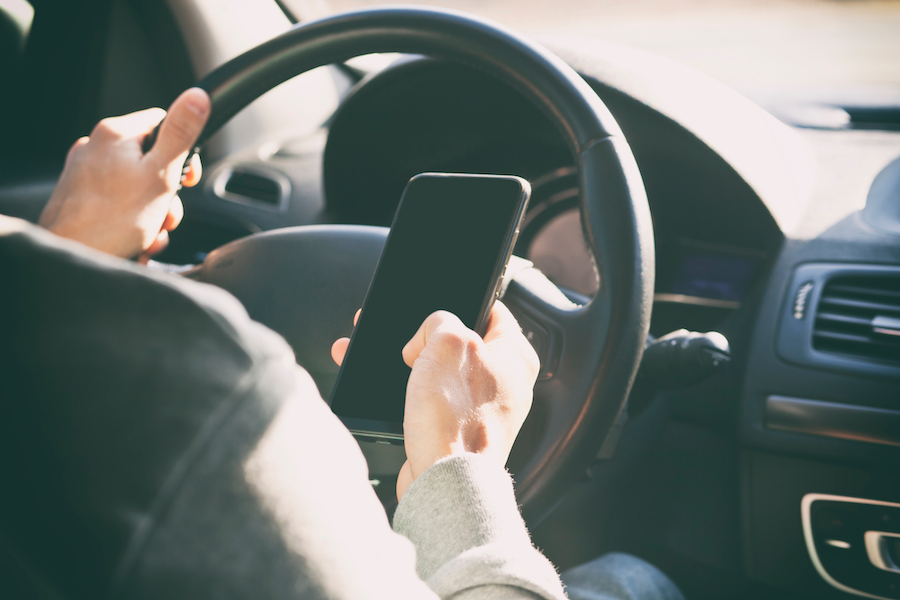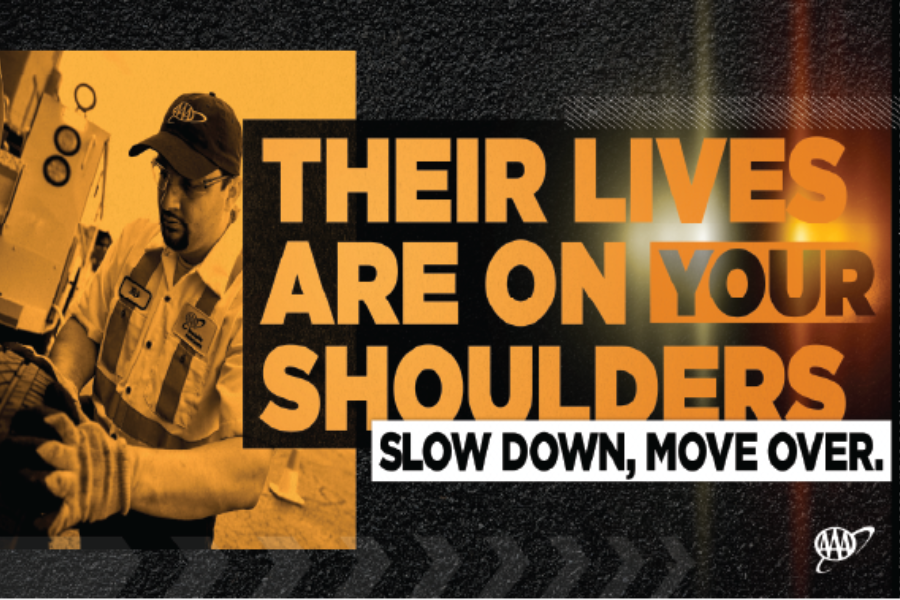AAA Foundation: Distracted Driving

Distracted driving has been around since the invention of the automobile. Countless activities can divert driver attention, including eating, drinking, personal grooming, adjusting the radio, using a cell phone, text messaging and many others.
Because of incomplete and likely underreported data, no one knows exactly how many crashes are caused by driver distraction. However, the National Highway Traffic Safety Administration estimates that driver distraction in all its forms is a factor in 8% of fatal crashes.
An analysis of data from the Virginia Tech Transportation Institute by the AAA Foundation for Traffic Safety revealed that taking your eyes off the road for more than two seconds doubles your risk of a crash.
Drivers that use cell phones while behind the wheel, one of the most publicized sources of distraction, are up to four times as likely to be involved in a crash. Further, research shows that hands-free cell phones offer no significant safety benefits over handheld phones — hands-free is not risk-free.
ADDRESSING THE PROBLEM: AAA RESEARCH
The AAA Foundation has sponsored research on distracted driving since the early 1990s. Its annual Traffic Safety Culture Index continues to reveal a strong “do as I say, not as I do” attitude towards distracted driving and many other driving activities/behaviors. More than a quarter of drivers report typing or sending a text message or email and more than 1 in 3 report reading a text or email while driving in the past month.
Since 2013, the AAA Foundation has partnered with researchers at the University of Utah to conduct groundbreaking research substantiating the impact of mental distraction on driver performance.
- In Phase I of the project, researchers found that the use of speech-to-text technologies, such as features allowing drivers to respond to text messages or emails, results in a high level of mental distraction.
- In Phase II of the project, researchers found that the cognitive distraction level for in-vehicle infotainment systems increases with the complexity of driver interactions.
- Phase III of the project, researchers found that the distracting effects of mental distraction linger as long as 27 seconds after a distracting task ends.
- In Phase IV and V, researchers found that infotainment systems in 23 of 30 tested vehicles generated high or very high levels of demand on drivers. Seven vehicles tested generated moderate demand.
- In Phase VI, researchers found that Android Auto and Apple CarPlay produce lower levels of distraction compared to automakers’ native systems.
- In Phase VII, researchers found that, though in-vehicle infotainment technology creates potentially unsafe distractions for all drivers, the safety risk is more pronounced for older adults, who took longer 4.7-8.6 seconds to complete tasks, experienced slower response times and increased visual distractions.
- AAA is urging the auto and consumer electronics industries to improve the safety of these technologies by simplifying their systems and minimizing the mental demand.
AAA Foundation research released in 2014 analyzed footage recorded by in-vehicle video camera systems to determine the causes and contributing factors of teen driver crashes. Video analysis revealed that distraction was a factor in nearly 6 out of 10 moderate-to-severe teen crashes, which is four times as many as official estimates based on police reports.
A COMPREHENSIVE APPROACH
- Education: Informing drivers about the risks of distraction through education, outreach and training.
- Enforcement: States should establish evidence-based laws that are visibly and consistently enforced.
- Engineering: Roadway countermeasures that can help prevent distracted driving crashes and injuries and vehicle and communications technology may play a role in future solutions to reducing distraction.
- Evaluation: Continued research on the impact of distraction and the most effective ways to curb it.
- Equity: Commitment to ensuring fair and impartial application of state laws, community-based programs and dissemination of consumer education proven to positively influence safe behavior.
What You Can Do
- Fully focus on driving. Do not let anything divert your attention, actively scan the road, use your mirrors and watch out for pedestrians and cyclists
- Put aside your electronic distractions. Don’t use cell phones while driving – handheld or hands-free – except in absolute emergencies. Never use text messaging, email functions, video games or the internet with a wireless device, including those built into the vehicle, while driving.
- Make adjustments before you get underway. Address vehicle systems like your GPS, seats, mirrors, climate controls and sound systems before hitting the road. Decide on your route and check traffic conditions ahead of time.
- If you have passengers, enlist their help so you can focus safely on driving.
- If another activity demands your attention, instead of trying to attempt it while driving, pull off the road and stop your vehicle in a safe place. To avoid temptation, power down or stow devices before heading out.
- As a general rule, if you cannot devote your full attention to driving because of some other activity, it’s a distraction. Take care of it before or after your trip, not while behind the wheel.
To learn more about the dangers of distracted driving, potential countermeasures and AAA’s driver education and training programs, visit AAA.com/dontdrivedistracted and for more research by the AAA Foundation for Traffic Safety, go to AAAFoundation.org.





